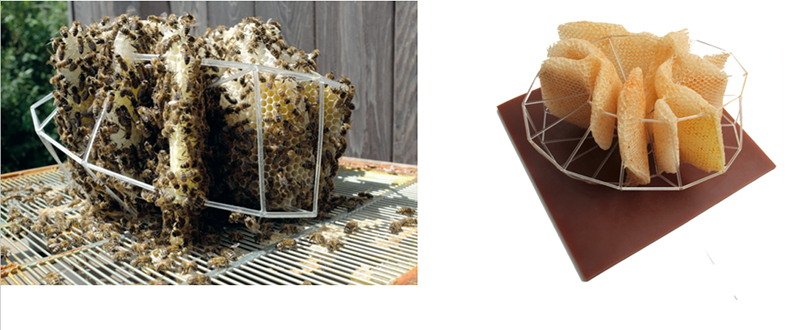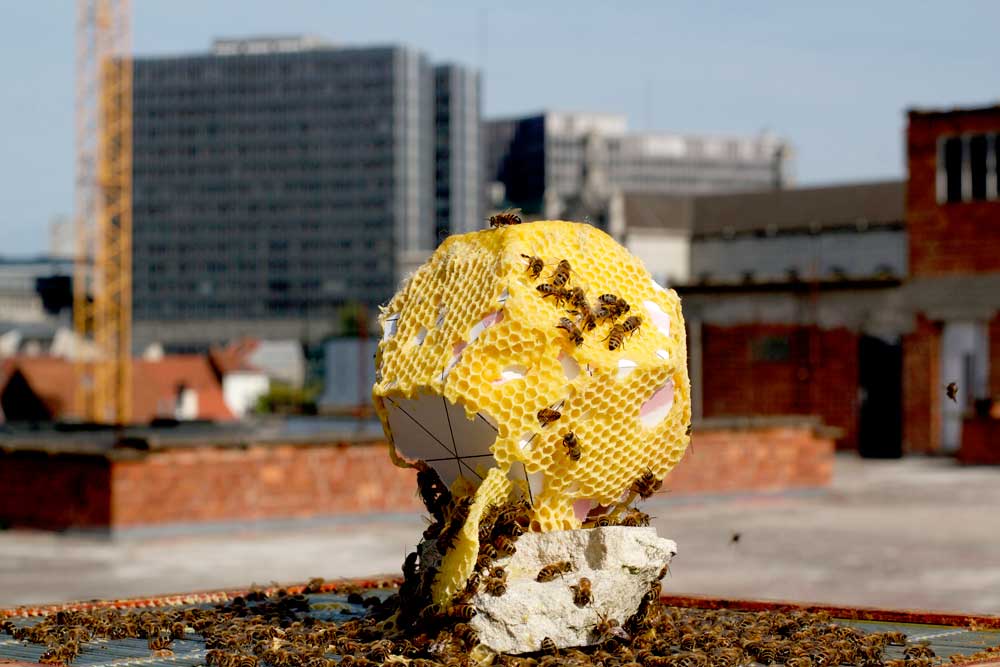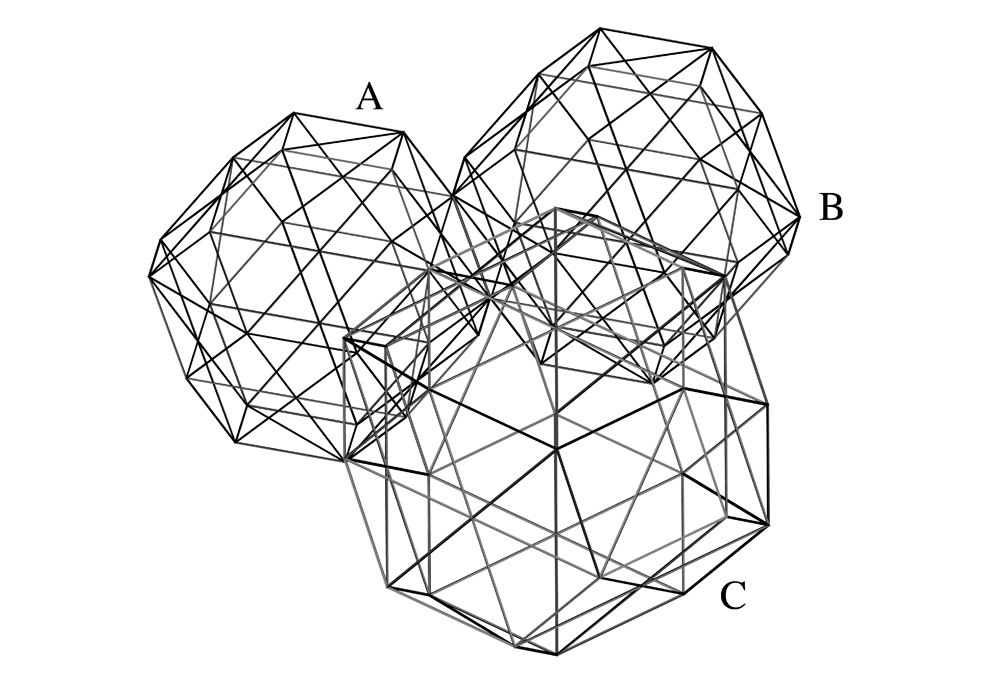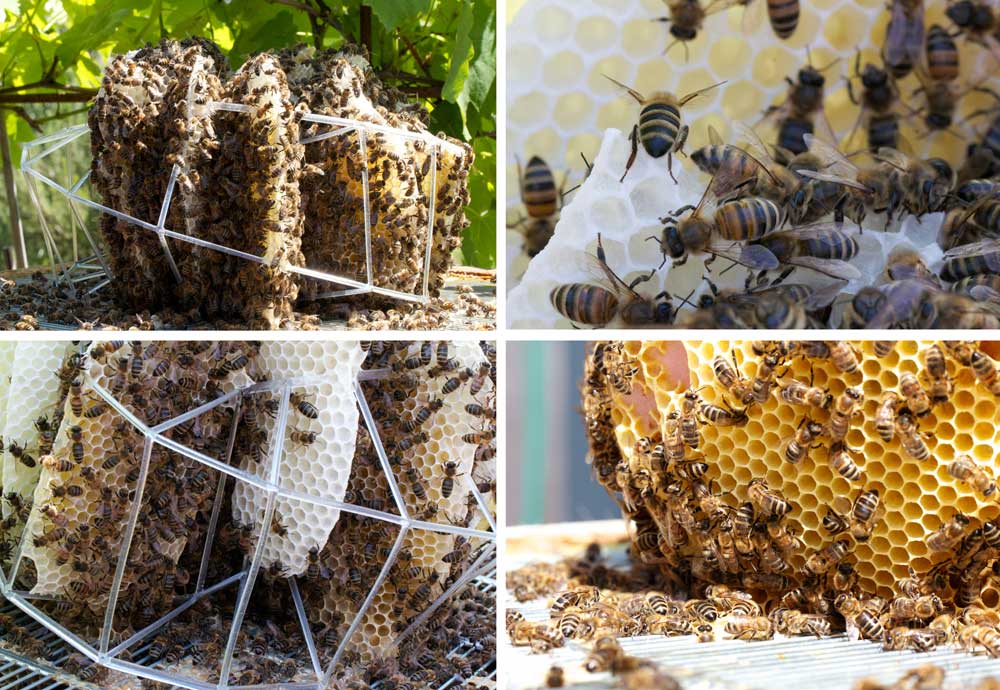A Moebius-strip was printed in 3D (transparent resin) and put in a beehive. The colony, in full expansion, started to built waxcomb in the 3D structure. As such, a hi-tech 3D print is combined with a natural 3D print, a good example of biomimesis, advanced technology inspired on nature.
Similar experiment was executed with a paper truncated octahedron-shape. There, the bees started eating the paper and moved away the wax.


bees at work in the Brussels Urban Bee Lab

Bees create arrays of hexagonal cells in a beehive.The two layers of comb are offset so that the center of a cell on one side lines up with the point where three cells meet on the other. The ends of the cells form half of a rhombic dodecahedron, a geometrical shape common found in nature.
The tiling of the comb, based on regular hexagons, divides the plane into equal-area cells with minimal perimeters. This way the bees minimize the use of wax in the cell walls. The bottoms of the honeycomb are efficient, but mathematicians pointed out that they are not the optimal configuration. A cell bottom shaped like a truncated octahedron has less surface area than one shaped like a rhombic dodecahedron.
More info on comb building: annemariemaes.net/bee-observation
A Moebius-strip was printed in 3D (transparent resin) and put in a beehive. The colony, in full expansion, started to built waxcomb in the 3D structure. As such, a hi-tech 3D print is combined with a natural 3D print, a good example of biomimesis, advanced technology inspired on nature.
Similar experiment was executed with a paper truncated octahedron-shape. There, the bees started eating the paper and moved away the wax.

